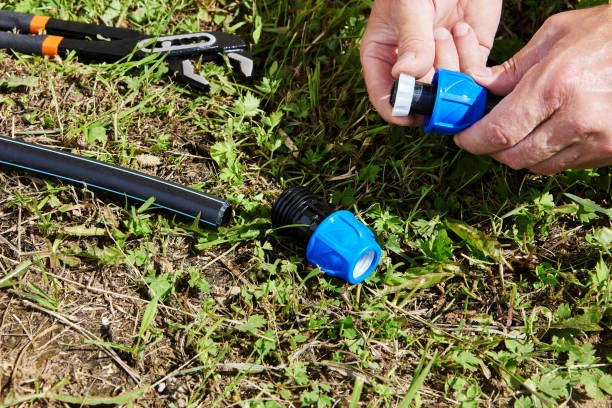As winter approaches, homeowners must be vigilant about the potential for burst pipes. Cold weather can lead to significant water damage, costly repairs, and inconvenient disruptions. Understanding how freezing temperatures affect plumbing systems is crucial for preventing such issues. This article will explore the causes of burst pipes, the impact of water damage, and preventive measures homeowners can take.
Understanding Burst Pipes
What Causes Burst Pipes?
Burst pipes typically occur when water inside the pipes freezes. As water freezes, it expands, putting immense pressure on the pipe walls. If the pressure exceeds the pipe’s capacity, it can crack or burst, leading to leaks. Common locations for burst pipes include unheated areas, such as basements, attics, and outside walls.
Common Signs of Potential Pipe Issues
Homeowners should watch for signs that indicate potential pipe problems. These include water stains on walls or ceilings, reduced water pressure, and unusual sounds from the plumbing system. Recognizing these signs early can prevent a small issue from becoming a major disaster.
The Impact of Burst Pipes Water Damage
Immediate Consequences
When pipes burst, the immediate consequence is water damage. This can lead to flooded basements, damaged floors, and ruined personal belongings. The cost of repairs can quickly escalate, especially if the water damage affects structural components of the home.
Long-term Effects
In addition to immediate damage, burst pipes can lead to long-term issues such as mold growth. Mold thrives in damp environments, and a burst pipe can create the perfect conditions for its growth. Homeowners may face health risks and further repair costs if mold is not addressed promptly.

Burst Pipes Preventive Measures for Homeowners
Insulating Pipes
One of the most effective ways to prevent burst pipes is to insulate vulnerable pipes. Foam insulation sleeves or heat tape can provide a protective barrier against freezing temperatures. Homeowners should focus on pipes located in unheated areas, such as garages and crawl spaces.
Keeping the Heat On
During extreme cold, homeowners should keep the heat on, even when they are away. Maintaining a consistent temperature in the home helps prevent pipes from freezing. It’s especially important to keep the thermostat set to at least 55°F (13°C).
Allowing Faucets to Drip
Allowing faucets to drip can relieve pressure in the plumbing system. This is particularly useful during severe cold snaps. By letting a small stream of water flow, homeowners can help prevent the pipes from freezing.
Preparing for Pipes Extreme Cold
Winterizing Outdoor Plumbing
Before winter arrives, homeowners should take steps to winterize outdoor plumbing. This includes draining garden hoses, shutting off outdoor faucets, and covering any exposed pipes with insulation. Properly preparing outdoor plumbing reduces the risk of burst pipes.
Monitoring Weather Conditions
Homeowners should stay informed about weather forecasts, especially during cold snaps. Being aware of impending freezing temperatures allows for proactive measures to protect plumbing. This can include checking on vulnerable pipes and adjusting heating systems as needed.
What to Do If Burst Pipes Freeze
Recognizing the Signs
If homeowners suspect that their pipes have frozen, they should look for signs such as reduced water flow or strange sounds when turning on faucets. Immediate action can help prevent pipes from bursting.
Thawing Frozen Pipes Safely
To thaw frozen pipes, homeowners can use a hairdryer or space heater. They should start thawing at the faucet and work their way toward the frozen section. It’s crucial to avoid using open flames, as this can damage the pipes.
Emergency Measures for Burst Pipes
Shutting Off the Water Supply
If a pipe bursts, the first step is to shut off the water supply to prevent further flooding. Homeowners should locate the main shut-off valve and turn it off immediately. This action minimizes water damage and allows for repairs to begin.
Contacting Professionals
After shutting off the water, homeowners should contact a plumber or water damage restoration service. Professionals can assess the damage, repair the burst pipe, and address any water damage. Quick action can mitigate long-term consequences.
Conclusion
Cold weather poses a significant threat to plumbing systems, with burst pipes being a common and costly issue. By understanding the causes of burst pipes and implementing preventive measures, homeowners can protect their properties from water damage. Taking proactive steps during winter can save time, money, and stress in the long run.
FAQ
1. What should I do if I suspect my pipes are frozen?
Check for reduced water flow and thaw the pipes using a hairdryer or space heater.
2. How can I prevent my pipes from bursting in winter?
Insulate pipes, keep the heat on, and allow faucets to drip during cold weather.
3. What are the signs of a burst pipe?
Look for water stains, reduced water pressure, or sounds of running water when faucets are off.
4. How can I winterize my outdoor plumbing?
Drain hoses, shut off outdoor faucets, and insulate exposed pipes before winter.
5. What should I do immediately after a pipe bursts?
Shut off the main water supply and contact a plumber or water damage restoration service.


















